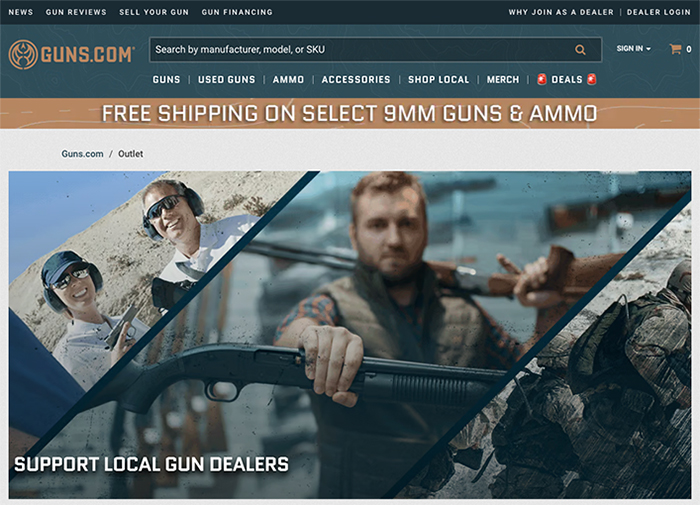7 Social Trends For 2023 You Should Care About
(And One Bonus Trend That Could Set
You Free From Social Media)
The marketing and advertising universe (a better term is “metaverse”)moves fast, and no marketer sees this more than those who live in social media. What worked in January 2022 may not work in January 2023. And those “old” stories we tell ourselves to use X number of hashtags per post, or just create Reels all day also aren’t working any longer.
So, what is working? The following are the social media trends either here to stay or are just emerging for 2023. Here are seven trends to be on the lookout for in 2023.
1. The Metaverse Is Here, But Will We Gravitate to It?
In October 2021, Mark Zuckerberg changed his company name from Facebook to Meta, announcing the company is now “Meta-first.” And a year later, in a Meta Connect summit, Zuckerberg shared there are more people in the VR (virtual reality) world than ever before — more creators creating worlds, developers developing apps and brands launching virtual goods (NFTs, anyone?). The future isn’t far away.
As Zuckerberg noted in this summit, “Opportunities here are going to keep growing as more devices are being made and more people are on the platform.”
Sure, but what about our world? What about those of us who head to the range during the week and go to the field on the weekend? Do we want to live in a virtual world? Probably not. However, Meta sees VR as a social platform. There are VR chats and games that allow for multiple player options — you can even record a podcast in VR!
What does this mean for brands in the firearm space? Not much, unless spending thousands of dollars on developing a VR game is in the marketing budget. But perhaps there are ways to dabble — by creating VR chat rooms for first-time firearm buyers or developing a podcast on VR. This would show that, yes, the firearm industry understands the metaverse and wants to play.
2. Meta Is On The Struggle Bus With TikTok
Instagram continues to release anywhere between 10–12 updates per month. Some are big; some are random — like a recent release allowing a song to play on your profile. Why are they updating their platform so much? Well, they’re struggling with competition from TikTok.
Say what you will about TikTok: It continues to dominate the social media space with the amount of traffic to its app. Even its advertising campaign of #ilearneditonTikTok is telling people to not Google their questions — or even visit YouTube (which was previously the Google research platform of choice) but instead, head to TikTok. Articles popped up late 2021 announcing how TikTok’s traffic surpassed that of Facebook and all of Google’s suite of products, including Gmail! However, Instagram has been downloaded more times than TikTok (3.8 billion vs. 2.6 billion), which means, by default, there are more users on Instagram.
Even with all the geopolitical drama surrounding TikTok, according to a recent article by DigiDay,1 the platform is still a brand marketer’s dream.
Author Krystal Scanlon states, “And the ad dollars continue to shift to TikTok from other channels, from Facebook, YouTube, Snapchat, even TV. This is happening despite recent warnings in the U.S. from political leaders whose national security concerns could spark regulatory action against TikTok, which is owned by China-based ByteDance.”
Most of our readers are unable to even exist on TikTok (even if it was desired) due to the nature of the firearms business. But the firearm audience is there, regardless. Meta knows all audiences are there, but even after tossing millions in developing new features on Instagram, it is still on the struggle bus, according to an article from SocialMediaToday.
It shares, “According to a new report from The Wall Street Journal, Instagram engagement is declining, with Reels in particular, seeing a significant drop-off in user engagement of late. As reported by WSJ, TikTok users are spending over 10 times as many hours consuming content in that app as Instagram users currently spend viewing Reels. According to a leaked internal report, Reels engagement is also in decline, dropping 13.6% in recent months — while ‘most Reels users have no engagement whatsoever.’”2
So … in case you were wondering why your Reels views and engagement have dropped over the past six months, there it is in a nutshell.
Does this mean brands need to jump on TikTok? No. Should you at least secure your handle so no one else takes it? Yes.
Don’t listen to the experts. Post when your team (or you) has the time, energy and frankly has something of value to say!
3. The Massive Amount Of Content Created Daily
Chalene Johnson of InstaClub Hub recently shared to grow on Instagram or TikTok specifically accounts need to post three to five times per day.3 (She goes on to say this may not be the best strategy for all accounts as mental health is also a big — and worthwhile — discussion today.)
This is our current world, as much as brands may dislike it. Brands previously thought followers would “get tired” of their content delivered that often. But the kicker is — users follow so many accounts they just endlessly scroll through their feed, and do they really know if one gun post from the range is different from other’s gun post from the range? They just want the gun post. Full stop.
Being unique and breaking through the clutter has always been a marketer’s challenge — it doesn’t matter if it’s a TV commercial, print ad or devising a content strategy for social media.
Yes, but how?
1. Post as often as what fits in the schedule. Don’t listen to the experts. Post when your team (or you) has the time, energy and frankly has something of value to say! Use a third-party scheduler, but Facebook’s Creator Studio can serve all needs for Instagram and Facebook scheduling. LinkedIn is even testing a scheduling tool. Batch create and schedule posts out for a month at a time.
2. Make content about the end user. Use hooks when creating content, such as “The number-one reason you aren’t hitting the target,” or “I bet you didn’t realize our business offers …” or “If you have [this problem] then [here’s the solution].”
4. Authenticity (Still) Reigns
Meta doesn’t want your leftovers. In other words, they want one-of-a-kind, authentic content created specifically for their platforms. Again, blame TikTok. Due to its wide popularity of video content, folks were re-utilizing their TikTok videos to Instagram and Facebook.
And since they are competitors, Meta wants none of it and began to “downgrade” those videos with the TikTok logo on them. Facebook has long downgraded video links to YouTube. (Google and Meta are competitors, as well.) And in fact, Facebook, in general, doesn’t want people leaving its site.
Authenticity also means less production, less acting and more “being present.” There’s no secret formula to being authentic — just be you. Camera-phone pictures perform just as well as DSLR — and videos shot vertically with you talking into the camera within the app perform the best.
The problem for many brands is: Who is our spokesperson? Who is “the face” of the brand? Who do we put on camera? Is it the influencers? Is it the CEO? Is it the social media person?
Brands must decide their “persona” on social media and stick with it. Whether it’s the usually stuffy CEO being witty in video, or a handful of influencers who continually create content for the brand, the result is the same — just post authentic content specific to that platform.
5. Increased Social Media Safety
Adam Mosseri, Instagram’s CEO, continues sharing safety announcements for Instagram, which is beneficial for brands in the firearm space.
1. Improved Nudges. If someone writes something that could be interpreted as offensive or heated, the nudge will ask them if they’re sure they want to send it. This may assist in those “back-and-forth” arguments in the comments.
2. More Blocking. Currently brands had the option to block an account and any new accounts they create. Now everyone can block any existing accounts they have, too.
3. Expanding “Hidden Words.” Hidden words are expanding to more areas to keep your messages and space safe from certain words. They’re expanding this list to include typical words seen in spam and scams.
For brands, the biggest safety feature everyone continues to battle is hacking. Hackers are becoming increasingly sophisticated, with the latest scam landing in DMs asking if “you can do me a favor,” and then asking to turn off two-factor authentication. Never, ever turn off two-factor authentication, no matter the reason given. Social media managers must stay diligent to keep them — and the brands they represent — safe, and that will only become more of an issue in 2023.
All parties who have access to your brand’s social pages better have two-factor authentication on for their personal pages. Assume at any point in time someone is attempting to hack your pages. Question everything. Also, brands don’t have to engage on every comment, every time. It’s acceptable to delete comments. It’s acceptable to block users. And, dare it be said, it’s also acceptable for the social media manager to make these sorts of decisions on their own.
6. Video Has Moved Into The Mother-in-Law Suite, And Lives With You
The “TikTok Brain” article in the WSJ mentioned in No. 2 focused on kids demonstrating how they’re unable to sit through a feature-length film. However, you could argue adults are feeling “TikTok Brain” just as much. Are our attention spans shorter? Is the brain being rewarded with short bursts of funny cat videos? This is so powerful, YouTube launched “Shorts” in 2020, which are short videos shot in vertical format. (Sounds a lot like TikTok, right?)
Making long-form content still has its place. Instagram recently extended the length of Reels to 90 seconds and increased video length in Stories from 15 seconds to 60 seconds.
What hasn’t changed, however, is how entertaining, engaging and educational these videos must be to perform well — and it’s only going to become more important in 2023. Time spent on a post is a key factor in any social media site’s algorithm. YouTube rewards its creators financially the longer people spend watching their content and Instagram rewards those pages who people save, like, comment or pause on a post (all are considered forms of engagement).
Takeaway: while Mosseri has since backed down on the idea of “all video, all the time” on Instagram, video still performs well across all platforms. For Instagram and Facebook, go back to sprinkling in static images and carousel posts. For Facebook, LinkedIn and Twitter, continue sharing blog posts and other, long-form content and for YouTube, record video in vertical specifically for “Shorts.”
Authenticity also means less production, less acting and more “being present.” There’s no secret formula to being authentic — just be you.
7. Social Media Overlap With SEO
There’s a strong overlap of how a brand’s social media pages impact SEO rankings. Those social media pages can help build ranking for your website by providing backlinks and building trust with Google. How? Say a brand shares blog content about “how to buy your first firearm” to their Twitter feed and a few influential gun influencers retweet it. And a blogger writing an article about first-time gun owners finds those retweets and uses that article as a reference for their blog, thereby creating a backlink to the brand’s original blog. This backlink helps create better ranking on Google. Don’t get this confused by the fact a Tweet helped the brand’s website rank better. The Tweet is “correlation,” whereas the blogger who saw the Tweet and used it in their article is “causation.”
Hashtags are still a useful keyword tool, but Mosseri has reported hashtags aren’t necessarily helping posts show up in searches. He claims they were never meant to assist with boosting engagement on a post, but more to help categorize that post for people to find it easier in search. While it’s important to use hashtags, keep it to three or four keywords.
Other SEO practices important for all social media feeds:
• Use keywords in the company bio and change the Instagram Name (not the username) to keyword-specific terms for your brand or business (e.g., The Best Long-Gun Range in Dallas).
• Use commonly searched words in captions.
• Use text in videos (take advantage of auto-captioning for Reels and Stories).
• Take advantage of alt-text on posts by stacking with keywords. (Alt-text is for sight-impaired users; it helps to describe the post. For example, a lady in blue shooting a GLOCK 19 with XYZ ammo and upgraded fiber optic sights at the XYZ gun range.)
While it’s difficult to keep up with all the changes, pay attention to the little things — such as researching keywords for your business, maximizing your social media bio and get with the company’s web team to have a better discussion on how each can assist in optimizing SEO.
8. (Bonus!) Step Away From Social Media. Period.
Didn’t see this one coming? Mari Smith, a long-time Facebook advocate and guru, recently posted about the “seas of change” she’s seeing on Facebook. She wrote in a post:
“I keep seeing people who used to publish content much more regularly — on their personal profiles and business pages — have cut back or even ground to a halt. It’s overall frustration with social media. It’s constantly jumping through hoops to comply with the latest algorithmic challenges for little reward. It’s being utterly fed up with bugs, glitches, issues, lockouts, shut downs and more, with zero support. It’s allowing ourselves to be conditioned (and manipulated) by the big-tech companies, believing the only way to succeed on their platforms is to crank out even more content and try all kinds of tricks and hacks to get our stuff seen, to get more reach, to grow our following, etc. etc.”4
Mari — welcome to our world. Those of us in the outdoor industry have felt this for a long, long, long time. She continued in this lengthy post to share social media agencies are losing clients as companies no longer see results, and they want to step off the hamster wheel.
Stepping away from social media is no longer shocking. But hopefully it means brands are stepping into other ways of communicating with their customers, such as email marketing, text messaging, VIP groups, in-store functions and more. Is this a trend? Are brands done with social media? It’s difficult to say, but there’s a systemic shift happening in social media. Perhaps it was just time for it to occur.
Where To From Here?
Trends are funny in that we’re looking ahead six to 12 months, trying to decide how the marketing mix (and budget) should look for 2023. But then Meta laughs in our faces and changes everything with one little update.
Therefore, if there’s anything to take away for 2023, it is to be flexible, ask questions, be alert, don’t live in a social media silo and, no, social media isn’t just punishing you, it’s punishing everyone. Good luck!





